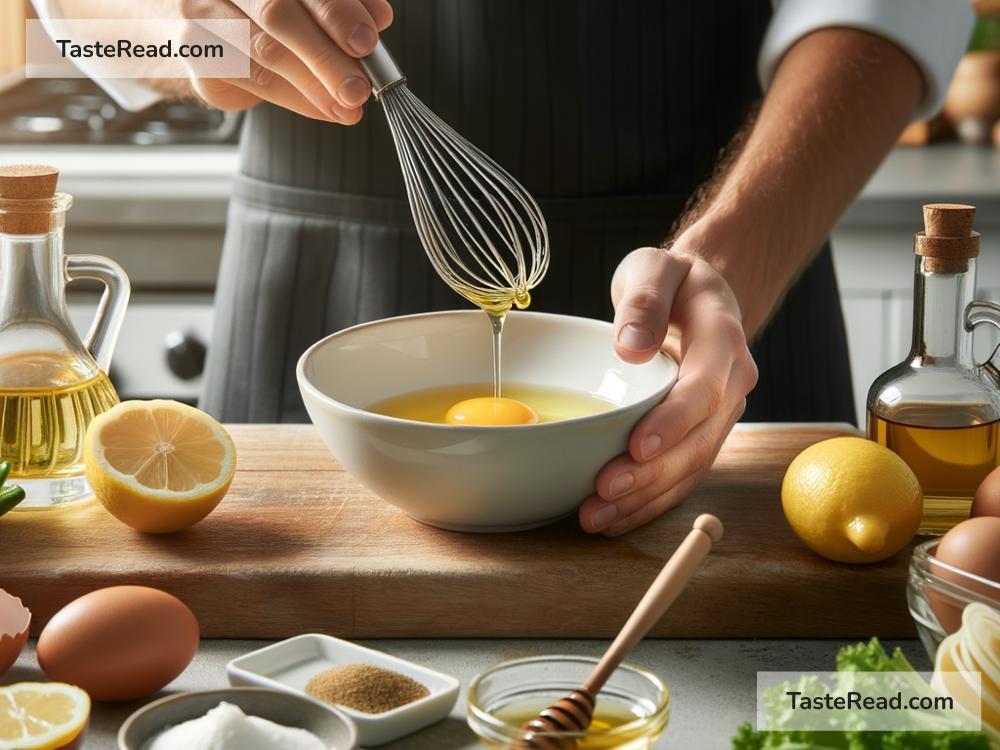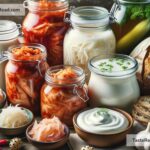The Science of Emulsions in Cooking: What Makes Oil and Water Mix?
When you hear the old saying “oil and water don’t mix,” it’s actually true most of the time. If you pour oil and water into a glass, the oil will sit on top of the water—they naturally separate because of their chemical properties. But how do chefs create dishes like creamy salad dressings, mayonnaise, or rich hollandaise sauce where oil and water blend together seamlessly? The answer lies in something called emulsions, which are a fascinating part of food science. Let’s dive into the basics and explore how emulsions work in cooking.
What is an Emulsion?
An emulsion is a mixture of two liquids that don’t normally mix, like oil and water. Instead of separating into two layers, the liquids are combined in a way that they stay blended. Think of mayonnaise: it’s smooth, creamy, and uniform. Without the science of emulsions, mayonnaise would just look like oil floating in water—not very appetizing!
The key to creating an emulsion is dispersing tiny droplets of one liquid into another liquid. This is often done by mixing, whisking, or blending. Once these droplets are small enough and evenly spread, the mixture looks uniform and holds its shape.
Types of Emulsions
There are two main types of emulsions:
-
Oil-in-Water Emulsions: In this type, oil is dispersed in water. Examples include milk, salad dressings, and mayonnaise.
-
Water-in-Oil Emulsions: In this type, water is dispersed in oil. Butter and margarine are good examples of this kind.
Why Don’t Oil and Water Mix Naturally?
To understand why emulsions are special, let’s look at the science behind oil and water. Water molecules are “polar,” which means they have a slight electrical charge—one end of the molecule is slightly positive, and the other end is slightly negative. Oil molecules, on the other hand, are “non-polar” and don’t have this electric charge. Because water is polar and oil is non-polar, they naturally repel each other, kind of like opposite ends of two magnets. That’s why oil and water tend to separate.
The Role of Emulsifiers: The Secret Ingredient
To make oil and water mix, you need an emulsifier. An emulsifier is a substance that helps bind oil and water together. It has a unique molecular structure: one end of the emulsifier molecule attracts water, and the other end attracts oil. This allows the emulsifier to act as a “bridge” between the two liquids, helping them stay mixed.
Common emulsifiers used in cooking include:
- Lecithin: Found in egg yolks and soybeans, lecithin is a powerful natural emulsifier. It’s why egg yolks are key to making smooth mayonnaise.
- Mustard: Mustard contains compounds that act as emulsifiers, making it easier to mix oil into salad dressings.
- Honey: While not technically an emulsifier, honey can help stabilize emulsions because of its thick texture.
How to Create a Stable Emulsion
Creating a stable emulsion in cooking often requires technique and patience. Here are some tips to get the best results:
-
Start Slowly: When making an emulsion, add the oil gradually. If you pour all the oil in at once, it won’t mix well with the water or other liquid.
-
Use Force: Whisking, blending, or shaking vigorously helps break the oil into tiny droplets and disperse them evenly.
-
Add an Emulsifier: As mentioned earlier, egg yolks, mustard, or other emulsifiers can help bind the liquids. This is especially important for long-lasting emulsions.
-
Control Temperature: Some emulsions, like hollandaise sauce, require specific temperatures to work. If the temperature is too high or too low, the emulsion might break and the ingredients will separate.
Common Examples of Emulsions in Cooking
Here are a few popular dishes and sauces that rely on emulsions:
- Mayonnaise: Made by emulsifying oil into egg yolks, along with vinegar or lemon juice.
- Vinaigrette: A simple salad dressing that mixes oil and vinegar, often with mustard as an emulsifier.
- Hollandaise Sauce: A classic French sauce made by whisking butter into egg yolks and lemon juice.
- Ice Cream: Emulsions play a role in blending milk fats and water to create smooth, creamy textures.
What Happens When Emulsions Break?
Sometimes an emulsion “breaks” or separates back into oil and water. This can happen if you add too much liquid too quickly, change the temperature drastically, or don’t use enough emulsifier. For example, if you overheat a hollandaise sauce, the butter and eggs will separate. But don’t worry—broken emulsions can often be fixed by slowly whisking the ingredients back together.
The Magic of Emulsions in Everyday Cooking
Emulsions may sound complicated, but they’re actually all around us. From the milk in your coffee to the butter on your toast, emulsions give food its texture, flavor, and smoothness. Understanding the science behind emulsions can help you become a better cook and troubleshoot recipes when things go wrong. So, the next time you whip up a batch of mayonnaise or toss together a vinaigrette, you’ll know exactly what makes oil and water come together in perfect harmony!
Cooking isn’t just about following recipes—it’s about understanding the amazing science behind your favorite dishes. Emulsions are just one example of how science makes food delicious!


